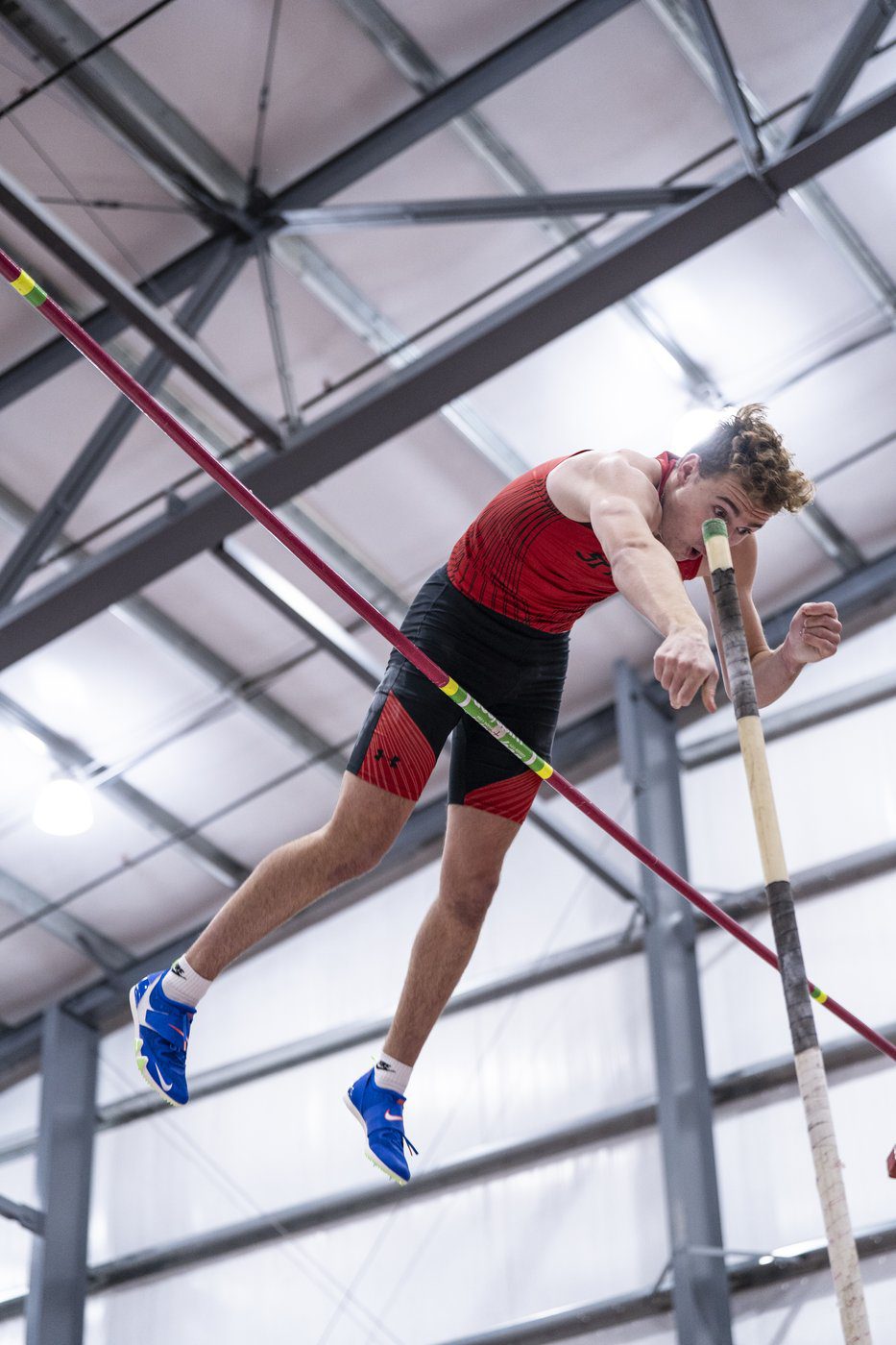Despite its challenges, the dream of going to a Division 1 school on the United States was too great for Liam Miller.
The pole vaulter from Milton, Ont., who turns 19 on Saturday, is committed to Wichita State University for the 2025-26 year. Miller wrapped up his post-graduate year of high school at Spire Academy in Geneva, Ohio, recently having had 21 D1 offers.
Although he was teased about Canada becoming the 51st state of the U.S. by some in his time at Spire, Miller said it didn’t faze him or factor into his decision.
“Politics never really came into place,” he said. “Being on a university campus, you’re already in sort of a more progressive-leaning place. You’re kind of in this academic bubble with a lot of kind-hearted people, and it really never came into play with me.”
“It has always been my dream to go to an NCAA Division 1 school,” he added. “My parents knew that and they’ve been very supportive throughout the whole way. … Getting a full scholarship is really hard. And I was so fortunate to have received an amazing scholarship from Wichita State.”
Brett Montrose, founder and co-CEO of Streamline Athletes, a company that helps high school track and field athletes get recruited, said it’s too early to tell if strained Canada-U.S. relations will play a part at all for the 2025 graduating class.
“From a Canadian student-athlete and family perspective, we are not at a point yet where we’re seeing many or any repercussions of the political tensions between Canada and the States on their decision making about where to go to school,” he said.
“That’s because anybody committing or signing with American or Canadian universities in 2025 likely began their recruitment process before the tensions were at anything close to the height that they are now between the two countries.”
For fellow Canadian track and field athletes, Brooklyn Taylor (Connecticut) and Shadae Thompson (Purdue), politics didn’t play a factor.
The landscape of NCAA sports has changed drastically over the last few years, especially due to the transfer portal. But in Miller’s case, challenges came from the change to roster limits and the increased cost in international student tuition fees schools have to consider.
Track and field teams could only have 45 members on full scholarship with no walk-ons allowed, meaning more schools were looking to shed athletes rather than bring more on, according to Miller.
In addition, his parents will need to help out financially.
“I will be having to pay for a few things,” Miller said. “They’re helping me a lot and I’m very fortunate for that.”
Taylor, a hurdler and long jumper from Alliston, Ont., also attended Spire this past year for Grade 12. But she had a different experience with her recruiting and scholarship experience.
She was once a competitive dancer who “really started training” for track and field in Grade 11, with dance taking top priority before then.
Already having been recruited in Grade 11, she gained interest from bigger D1 schools once she cracked the top 15 in the U.S., in the long jump and 60-metre hurdles. But scholarship amounts played a similar role to Miller in her decision.
“A lot of the times, … the international athletes did still have to pay a decent amount just because of exchange rates,” said Taylor, who mentioned she got “closer to 30” offers across different levels. “But I mean, I was lucky. My coaches were really good to work with. I also work really hard on my academics.
“I’ve maintained a high 90 (per cent) average throughout the entirety of my high school career. So a lot of the times these coaches aren’t even pulling from their sports scholarship money to send me on a full ride sort of thing. They’re able to kind of use more academic side of things and keep the sports scholarship amounts for the more academically challenged athletes on their rosters.”
Thompson, a sprinter from Whitby, Ont., stayed in Canada for high school at All Saints Catholic Secondary School in her hometown.
Thompson got three D1 offers — Marshall University, the University of New Mexico and Purdue.
While she will have everything covered at Purdue, she noted the school’s use of two-year plans instead of four.
“After two years, if you’re performing well, they’ll keep you for another two years,” Thompson said. “So then that would be like your quote, unquote four year plan.
“But if you’re underperforming after those two years then they have the right to kick you out. And from then on, you’ve got to figure it out on your own. So I’m kind of on a partial scholarship, you could say, but it’s basically a full.”
This report by The Canadian Press was first published May 29, 2025.
Abdulhamid Ibrahim, The Canadian Press





